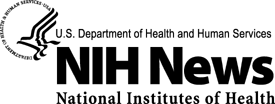| NIH Rolls Out Electronic Grant Submission
Stacks and stacks of grant application packages on paper will soon be a thing
of the past at the National Institutes of Health (NIH) as it readies to receive
grant applications electronically through the federal portal of Grants.gov, marking
a major change in the way it has traditionally conducted its grants submission
business.
Instead, bits and bytes will be part of the new grant submission lexicon at
NIH as it launches a new state-of-the-art way for applicants to submit their
grant applications electronically. Beginning with the receipt date of Dec. 1,
2005, NIH will require all its SBIR/STTR grant applicants to electronically submit
their competing grants. NIH plans to transition all of its competing grant programs
one by one from paper to electronic by May 2007. NIH’s electronic submission
timeline is available at http://era.nih.gov/ElectronicReceipt.
Electronic submission and grants administration will result in significant savings
to the government and holds promise for shortening the time period from grant
submission to award. NIH expects to eliminate approximately 200 million pieces
of paper a year and reduce the costs of scanning, data entry, data validation,
printing, and reproduction. Grant images will be very clear and in color. Efficiencies
gained will benefit both NIH and its partner institutions.
Even as it switches from paper to electronic submission, NIH is also moving
simultaneously from its PHS398 application form to the new SF424 (R&R) application
form. Every application via Grants.gov to NIH will need to come in on the new
SF424 (R&R) form. An applicant will fill out the application package and upload
it to Grants.gov; the NIH system will then retrieve it and produce a system-generated
application online.
NIH officially began its conversion from paper to electronic on October 18,
when it posted its first SBIR/STTR grant solicitations on Grants.gov, requiring
applicants to download and submit electronic SF424 Research and Related (R&R)
grant applications through the federal site.
According to Funding Opportunity Numbers PA-06-006 (http://fedgrants.gov/Applicants/HHS/NIH/NIH/PA-06-006/Grant.html)
and PA-06-007 (http://fedgrants.gov/Applicants/HHS/NIH/NIH/PA-06-007/Grant.html),
effective for the December 1, 2005 submission date, Small Business Research Innovation
Program (SBIR) and Small Business Technology Transfer Program (STTR) grant applicants
for non-AIDS-related grants must submit SF424 (R&R) application packages through
Grants.gov. NIH will no longer accept paper applications for these grant programs.
NIH announced its plans to phase in its new application process in the NIH Guide
for Grants and Contracts on August 19 (see http://grants.nih.gov/grants/guide/notice-files/NOT-OD-05-067.html).
There will be specific notices preceding the conversion of each grant program
(a.k.a. mechanism). All competing applications will use the new form and process
by May 2007.
"Since computers came on the scene in the 1970's, NIH has been committed to
using information technology to improve the grants administration process," said
Dr. Norka Ruiz Bravo, NIH deputy director for Extramural Research. "We fully
support the federal initiative, launched in 1999 by Public Law 106-107, to simplify
federal financial assistance application requirements and create a single website
to apply for federal assistance. Now applicants will benefit from having a single
federal interface for finding opportunities and submitting applications online
using a single form and process."
NIH urges grantees to begin preparing for electronic submission as soon as possible.
Institutions must register with Grants.gov. Institutions and principal investigators
(PIs) must establish NIH eRA Commons accounts.
Applicant organizations that choose electronic forms-based submission need to
download PureEdge™ software, available free-of-charge from Grants.gov. Alternatively,
to establish a system-to-system data exchange solution, institutions should contact
Grants.gov or partner with an authorized Service Provider that already has developed
a Grants.gov interface.
The transition to electronic submission will be a huge change for NIH and grantees
alike. The success of this initiative depends on the full cooperation of NIH
extramural staff, other federal agencies, and NIH partners in the research community. “I
encourage you to learn about the upcoming changes, to inform and educate your
colleagues, and to urge them to prepare for electronic submission,” concludes
Dr. Ruiz Bravo.
The following resources are available to assist the NIH grantee community with
the transition to the electronic SF424 (R&R) application process:
- For up-to-date, general information on electronic submission, the SF424 (R&R),
and Service Providers, go to http://era.nih.gov/ElectronicReceipt.
- For NIH funding opportunities, application guidelines, and grant-related
resources, go to http://grants2.nih.gov/grants/oer.htm or contact NIH at GrantsInfo@nih.gov.
- For information about Grants.gov registration, PureEdge™ software, forms
navigation, and submission, go to http://grants.gov.
- For information about NIH eRA Commons registration, application validation,
and post-submission functionality, go to https://commons.era.nih.gov/commons/.
The Office of Extramural Research (OER), within the NIH Office of the Director,
serves as the focal point for policies and guidelines for extramural research
grants administration. This office has primary responsibility for the development
and implementation of NIH Grants Policy, monitoring of compliance with PHS policy
on Humane Use and Care of Laboratory Animals, coordination of program guidelines,
and development and maintenance of the information systems for grants administration.
For more information about OER, visit http://grants2.nih.gov/grants/oer.htm.
The Office of the Director, the central office at NIH, is responsible for setting
policy for NIH, which includes 27 Institutes and Centers. This involves planning,
managing, and coordinating the programs and activities of all NIH components.
The Office of the Director also includes program offices which are responsible
for stimulating specific areas of research throughout NIH. Additional information
is available at http://www.nih.gov/icd/od/.
The National Institutes of Health (NIH) — The Nation's Medical Research
Agency — is a component of the U. S. Department of Health and Human
Services. It is the primary Federal agency for conducting and supporting basic,
clinical, and translational medical research, and it investigates the causes,
treatments, and cures for both common and rare diseases. For more information
about NIH and its programs, visit http://www.nih.gov. |

